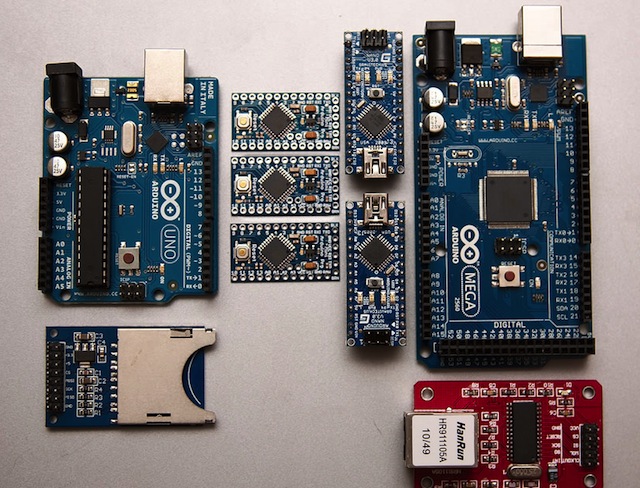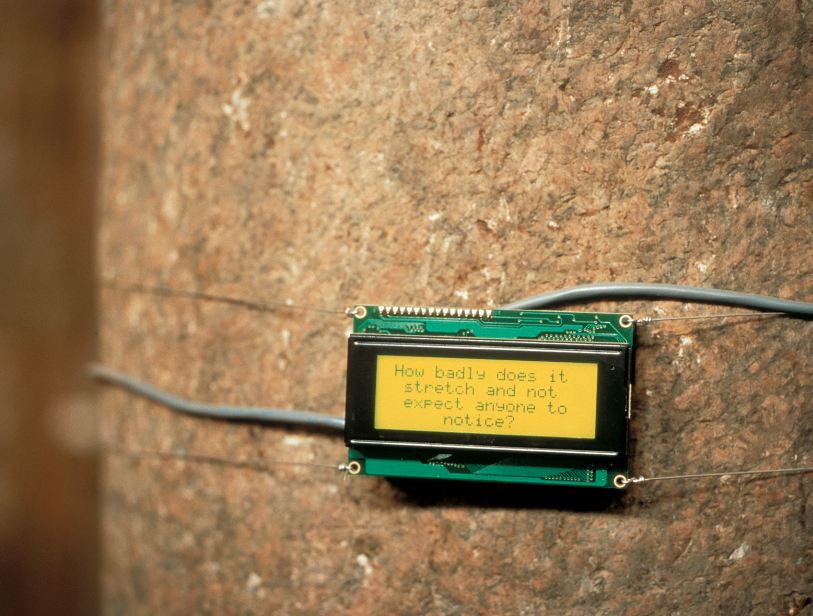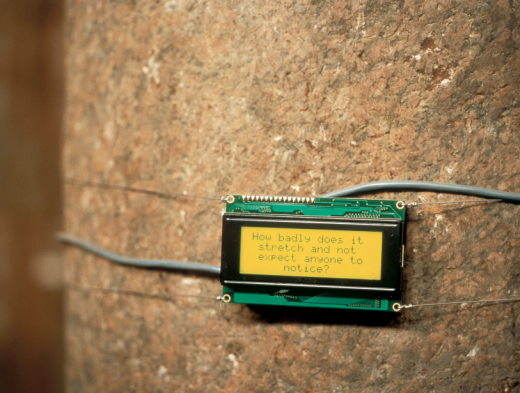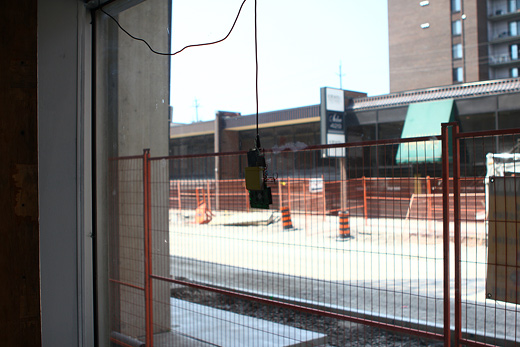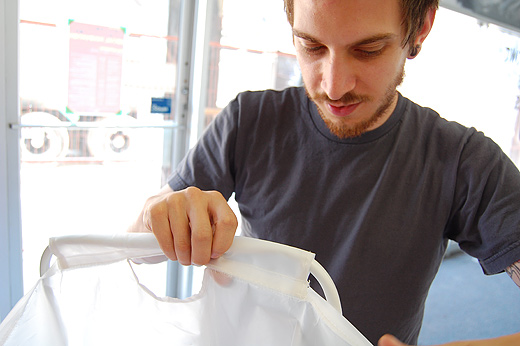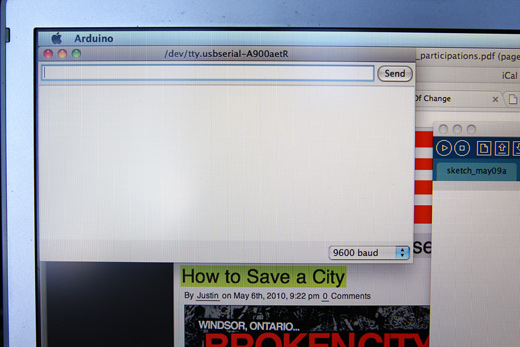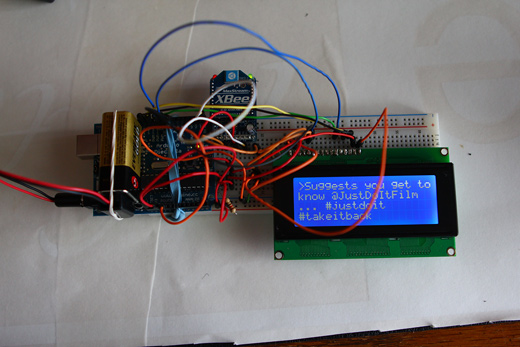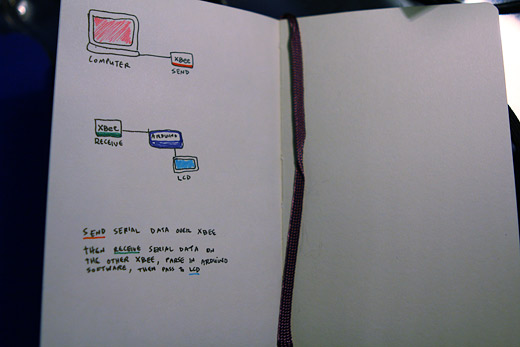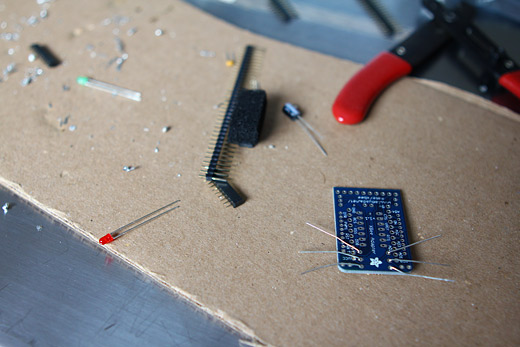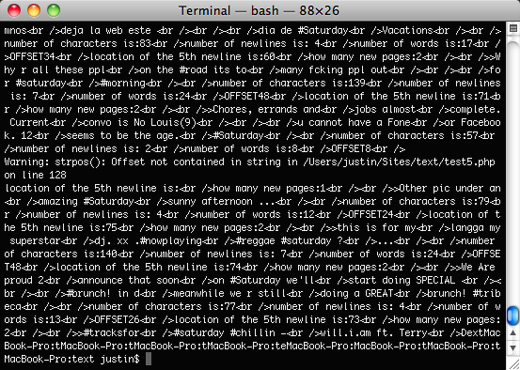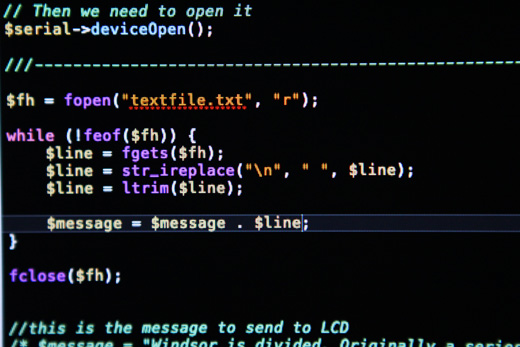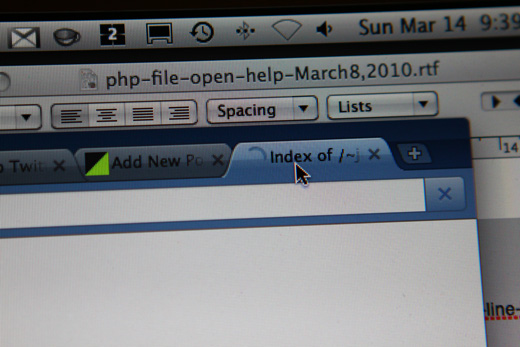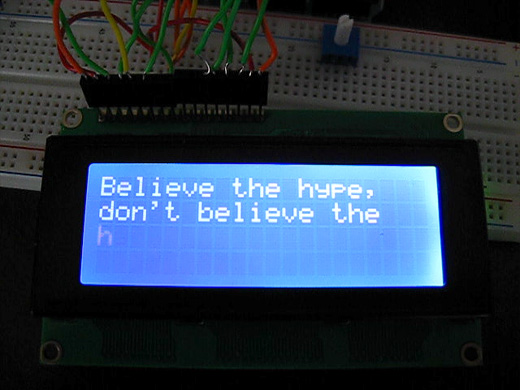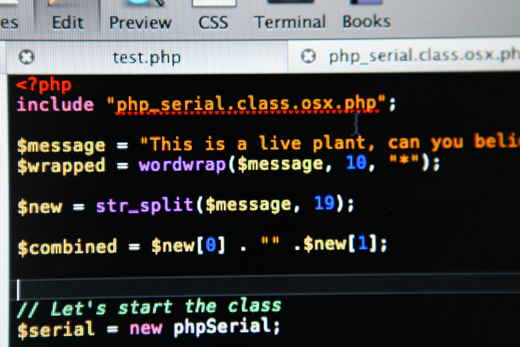
While the adventure in working on this project began months ago, I’ve finally sorted through the mess of files I made and put it all together in a nice handy zip folder. Using Arduinos, XBees, LCDs, and PHP, this project was challenging from a technical stand-point, but I think the project is now at a place where it can act as a foundation for a number of other projects I’m hoping to take on.
While the most-recent installation of this project was on view as part of SRSI, I’m already looking at the Arduino-TVOut library dreaming of what to do next.
Certainly, it’s no surprise that I really, really like working with text. I think there’s something about text that allows an accessibility to the work that isn’t always possible with an exclusively image-based presentation. So, while I had some loftier ambitious at the start of this project, it was actually the process of running into those walls that helped me to move this project into something that is more flexible and expansive (in the long-run).
I think there’s a lot of strong potential for this project — it’s possible for these to be battery-operated (though in my tests, you won’t get a hugely long run out of them), and even if you are tethered to a wall-based power source, you can still install these in a variety of situations. Being able to dynamically insert messages into public space is very fun and as this project continues to develop, it could provide the groundwork for a lot of new tactical activities.
Should you like to take on a similar project, I’ll detail the hardware/software requirements, code, and some general details below…
Continue reading “Arduino, PHP, LCDs, XBees: Tactical Texting in Public Spaces”
